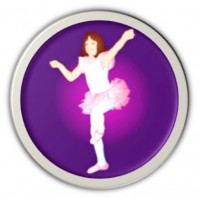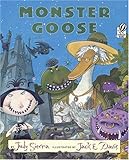
Have you used this nursery rhyme while teaching? If you have, then you were probably utilizing time.

- Image via Wikipedia
Time is an element that dancers use without even thinking about it. We clap the beat, we adjust the tempo or speed as need be, and challenge students with fun rhythmic patterns. We even play with accents. How many teachers have recited the phrase “run, run, LEAP, run, run, LEAP” while tapping on a tambourine, the loudest tap being on the word leap, or count three?
Time in classroom management
How we break down time helps to teach technique as well as classroom management. I use time in my classes to transition from one activity to another. “You have 10 counts to make a circle.” One, tap, tap, Two, tap, tap, Three, tap, tap…
Time is great for engaging the entire class when only a few students are moving. The remaining “audience” can accompany the movers by clapping the beat, accents or rhythm. Try allowing students to be in charge of changing the tempo or accent and watch how it affects the choreography.
Internal Time
When I was young dance student I was always a few counts ahead of everyone. My body liked to go fast. As a dance educator I still work to slow myself down when I teach and when I talk and give presentations. I learned as a dancer how to dance with the music, how to count and perform choreography but my natural inclination is to go fast. All people have a natural rhythm that they need to adjust to various situations.
When teaching, see if you can pick out the students who have a need to go fast. Which students bound into class full speed ahead? Which students have a slow inner tempo? Which students have a non-metric rhythm that seems to have no discerning pattern at all? You might find out that some of the kids that are moving really fast have a hard time slowing down because they lack muscle control or balance. And the kids who are prone to moving slow might need help in organizing their bodies. Some might have low tone and have trouble getting the push off the floor they need for jumps.
Time is a tool that can give us a window into the inner workings of the body. Play around with beat, tempo and rhythm for a more cohesive class, to help the children learn to move together, and challenge their natural tempo inclinations.
More ways to explore time with nursery rhymes:
1. Jack be Nimble
Jack be Nimble, Jack be Quick, Jack Jumped Over the Candlestick
I have the students run and jump over our “candlestick” on the word OVER. We accent the third beat and the children clap along. (one, two, Three, four/one, two, Three, four/one, two, THREE, four/ one, two, THREE, four.)
2. Pop Goes the Weasel
All around the cobblers bench the monkey chased the weasel; the monkey thought it all in fun, POP goes the weasel.
We lie on our stomachs and kick our legs to the beat and push up into a “cobra position” on the word “POP goes the weasel.”
3. Peas Porridge Hot
Peas Porridge HOT, Peas Porridge COLD, Peas Porridge IN the Pot Nine Days Old. Some like it HOT, Some like it COLD, some like it IN the pot nine days old.
For this exercise we stop and go. On every third beat we do a jumping jack. We jump out and hold the shape on HOT, we jump in and hold the shape on COLD, we jump out and hold the shape on IN and stay frozen for the remaining phrase. Then repeat for the next phrase.
4. Hickory, Dickory, Dock
Hickory, Dickory, Dock, the mouse ran up the clock, the clock struck one, the mouse ran down, Hickory Dickory Dock.

- Image via Wikipedia
When I first started teaching pre-ballet, my mentor Carolyn Santanicola, taught me some dances she did with the little ones. One of them was to Hickory Dickory Dock.
Hickory: toe tap (one)
Dickory: toe tap (two)
Dock: feet in (three, hold four)
The mouse ran up the clock: Run in place (and one and two and three and four) hands climbing up mimicking the feet counts
The clock struck one: Swing arm in big circle ending vertical over head on count two
The mouse ran down: run in place with arms (and three and four)
Hickory: toe tap (one)
Dickory: toe tap (two)
Dock: feet in (three, hold four)
When Carolyn first taught me some of the preschool dances I was resistant to teach them. I wanted the children to come up with their own ways of moving. I quickly realized that children love to learn dances as well as make up their own. Teaching specific steps and rhythm is beneficial for little ones to integrate time into their kinesthetic world.

Since nursery rhymes have poetic meters, they are easy to use when working on time. The possibilities of course are endless. Ask your students to suggest their favorite nursery rhymes as well. My daughter’s favorite nursery rhyme book right now is Monster Goose by Judy Sierra.
Mary had a vampire bat.
His fur was black as night.
He followed her to school one day
And promised not to bite.
She brought him out for show-and-tell;
The teacher screamed and ran.
And school was canceled for a week,
Just as Mary planned.
Stacey Pepper Schwartz is the Founder and Director of Leaping Legs Creative Movement Programs. The focus of Leaping Legs is to help people regardless of age, experience or ability, become educated about their movement potential, develop kinesthetic awareness, and become more physically fit and healthy together as a family, and community. Leaping Legs promotes its goal through its original Up Down & All Around DVD, teacher training, and school and community workshops. The Up Down & All Around DVD received Dr. Toy’s 100 Best Children’s Products 2009 Award and 10 Best Active Products 2009 Award. The DVD has also been featured in many magazines including Dance Teacher and Dance Retailer News. In its August 2009 issue, Dance Teacher called the DVD “an essential tool for teaching the fundamentals of movement with daily adult-child interactions.” Come visit www.leapinglegs.com to learn more about Stacey and her programs.


![Reblog this post [with Zemanta]](https://img.zemanta.com/reblog_e.png?x-id=46e11d68-5dc8-4675-ae9e-d37c63d5148b)
